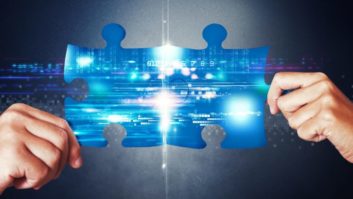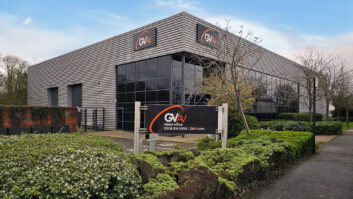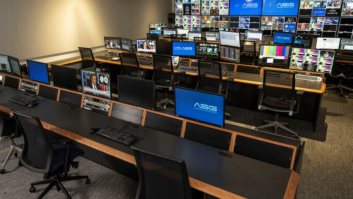Does the residential install market represent an untapped opportunity for commercial integrators looking to diversify? And equally, could CI pros expand their horizon (and bottom line), by taking on commercial projects? To find out, we quizzed those already straddling the divide.
The heartbeat of residential install certainly appears strong. Even back in 2018, when trade body CEDIA issued its last Size and Scope market report, high-end home theatre installs recorded 9% revenue growth YOY. Multiroom audio was also on an even keel, with wireless growing rapidly. Now with ongoing advances in UHD OTT services, and more ubiquitous high-resolution streaming audio services, both have most likely continued to boom.
The TVD Group owns both Nirvana AV, an award-winning custom install operation, and TVC Technology Solutions, a specialist in commercial install projects. Consequently, Daniel Hill, marketing executive for the group, is well versed in the integration challenges unique to both environments.
Contrary to popular opinion, no one residential project is the same. “It’s always an exciting challenge to truly understand what a customer is looking for,” says Hill. “They obviously have some idea of what they want when we first meet, but once we start discussing the possibilities available to them there’s a lot of excitement in the room.”
Seeing a project develop from initial consultation to delivery is the most rewarding part of the job, he says, confirming multiroom audio systems, home security and bespoke home cinemas are very much in vogue.
Home automation has followed a similar trajectory to smartphones, he notes. “Once deemed a high-end luxury, it’s now very much part of the mainstream. We don’t expect this trend to slow down.”
“Smart home automation is becoming less about functionality and more about lifestyle. We’re seeing quite a few trends driving it – customisation and home security, smart lighting, heating and occupancy simulation. We’re also placing a greater emphasis on interior design…”
Speed of change
No surprise then that automated TV lifts and hidden screens behind artwork are becoming extremely popular. “We’re a Control4 Platinum dealer, and this has allowed us to become expert in the capabilities of what that software offers. It allows us to integrate what seems like an endless list of devices, so we’re always able to adapt quickly and offer our customers the latest technology.”
One perennial trait of the residential market, is speed of change. The team at Nirvana AV are constantly reviewing new technologies. “We approach each project listening to what our customers want from their home automation, and then advise on what we can do.” The key is to have an open conversation, says Hill.
One positive aspect impacting residential install is the move to single, ubiquitous control. “We’re now installing systems that allow us to control various aspects of home automation, rather than requiring lots of equipment to control devices separately. New equipment is usually widely compatible with third-party control.”
“As a Control4 platinum dealer, our engineers are fully trained and know the platform inside-out, so once we see a new technology on the horizon, we’re fully prepared to advise our customers should they want to include it in their home automation system.”
Systems integrator ProAV also straddles the commercial and residential divide. Mark Roberts, residential sales manager, estimates that the residential sector will account for between 10-15 per cent of his company’s annual turnover in 2020. “Our residential department is growing rapidly.”
- Residential systems special report: Part one
- Showcase: Lighting control
- Residential systems special report: Part two
Comparable challenges
“From a technology mindset, the skillsets are similar, they just require a different approach. Yes, there are unique elements to residential work, but overall the challenges are comparable.”
When it comes to trends in residential AV, Roberts confirms that there’s a strong focus on control and automation. “Right now we are seeing lighting/BMS control becoming an essential part of any ‘resi’ wish list.”
Other changes to the custom install market have centred around the convergence of AV and IT, and the increase of IoT devices connecting to the network. “Consumers are looking for smarter homes ‘out of the box’ solutions to deliver the customisation they want.”
So how does the move to fewer, more wide-reaching residential control systems affect the job of the integrator?
“In many ways it’s creating a clear differentiator. Technology will always develop and as a result expand availability of mass market products that provide similar solutions. In the case of control solutions, it simply means you can either have an off the shelf product or a bespoke user interface. We lead with Crestron because it showcases unique user interfaces and the true extent of control possibilities enabled by our programmers…”
CEDIA member The Pyramid Group puts its business split at 70/30, in favour of commercial work. “In terms of value, the commercial side is much higher than residential,” says managing director Nic Black.
“The crossovers are visible between each sector, in terms of good practise for networking, rack building, installation standards and so on, but generally speaking, approaches differ in respect of products specified and levels of third-party integration.”
A commercial installation will generally feature minimal AV hardware integration alongside shading and lighting but not much more, says Black, whereas residential is all about integration. “The aim is to provide a seamless, easy to use lifestyle benefit for the homeowner.” These are two very different approaches and outcomes, he says.
Crucial differentiators between the two disciplines could be described as fun and function, suggests Nic Black. “The use of tech in the home should be about making life easier and more enjoyable for the end user. The challenge is to make sure that technology is integrated in the most sympathetic and considered manner.” Aesthetics, reliability and ease of use are key, he says. “We’ve moved away from the days when over complicated and ultimately disappointing systems were the norm. High end spaces are now about hiding the technology and focusing on the use of beautiful interior design and lighting.”
That said, commercial integration is seen as the more volatile of the two specialisms.
“Commercial AV is far more prone to the effects of economic impacts, geo-political conflicts, and investor confidence,” cautions Black. “Commercial companies will react to these conditions more readily and capital projects can be delayed as a result. We certainly saw that over the last few years as a result of Brexit uncertainty! On the other hand, the high-end residential market has probably never seen the same responses as it tends to be isolated by definition.”
Common thread
So just how easy is it to flit between commercial AV and home projects? “The common thread is a need to understand networks and how they function,” explains Garth Lobban, director of marketing for Atlona. “The typical commercial AV integrator has quite a bit of experience by now, but many custom installers are still learning how to manage the networking aspect in a residential system.”
Lobban says there’s a compelling new middle ground for what he dubs ‘light commercial’ emerging in the States. These commercial projects typically represent sports bars, restaurants and smaller entertainment venues, but are not dissimilar to residential systems as they carry TV signals, video streams and audio to displays and loudspeakers – only at greater scale.
“Light commercial projects are closer to distributed AV systems in homes than what you see in large commercial AV projects for schools, corporations, and larger arenas and stadiums,” he says.
Generally speaking, the skillsets are different, he insists, and firms rarely go back and forth between the two, “but we are seeing more custom installers gravitating to light commercial work, because that’s increasingly where the business is moving.”
So what integration challenges are unique to residential environments? Often it comes down to the basics, suggests Lobban. “The need to work within spaces not designed for cabling infrastructure has historically been our greatest residential challenge. Where can cables be run and hidden from sight?” This isn’t the case in commercial environments, he says.
“There’s an understanding that signals need to be transported from one point to another, and wires are the most effective means of transport. We have drop ceilings that allow for hidden cable paths; there’s an acceptance for conduit in plain sight when necessary.”
This isn’t the case in residential, he says, where cables need to be out of sight.
“Moving to wireless might solve that problem on the surface, but this introduces additional challenges with network coverage, speed and management. That’s why networking knowledge nearly matches cabling infrastructure as the top residential installation challenge!”
Driving engagement
As for trends driving engagement, they can vary, suggests Lobban. “Security is certainly a primary draw. That said, there are significant opportunities for AV in larger homes with their expanded number of entertainment spaces. A lot of it comes down to the customer base the installer is serving.”
The introduction of 4K was an infamous pain point when it came to signal distribution in the home. Now 8K is threatening to do the same again, but the lack of any content means there’s little for the trade to worry about at present, he suggests. “There were some challenges that came with the new technology in terms of constant updates to interface standards, content protection schemes, and successful communication between sources and sinks,” recalls Lobban, “but there was also a lack of 4K content. We are now seeing broader adoption of UHD as older 1080p systems are showing some age. Technology is better implemented, and content has caught up to the capabilities of the displays and sources.”
That’s not the case yet with 8K, he adds. “I’m sure the technology will bring amazing images and clarity, an improved visual experience, however, there’s a long way to go before the broadcasters, cable and satellite systems, streaming devices and the media players can support 8K source material. We have an opportunity to treat our customers to a better experience if we let systems evolve organically, and not rush them toward the next big thing.”
The real onus should be on improving the user experience on the commercial AV side, he says.
While AV over IP has traction in the commercial, and those ‘light’ commercial spaces, there remains an emphasis on matrixed solutions to serve HDBaseT and HDMI signals across multiple rooms in the home.
MSolutions, supplier of HDBaseT system testers among other AV tools, says demand from residential and commercial customers is split roughly 50/50. CTO Ariel Marcus reports growing interest in its testers from custom installers serving the residential market, eager to identify the capabilities of HDMI cables. “Both sectors are working through many of the same installation challenges and looking to solve many of the same problems,” he says.
Higher demands
“The residential sector has higher demands for resolution; it needs 4K HDR for Apple TV, Netflix and Amazon Prime. In commercial AV, up to 4K resolution, FHD is common.”
Marcus also identifies infrastructure as an ongoing vexation for residential integrators. “Custom installers must determine if the proper infrastructure is placed to support high-end AV systems. Even if it is, there’s the question of whether it can properly be used. In many residences, especially older buildings, it’s a big challenge to pull and install new cables. Often, the installer needs to secure licensing for permission to even do the work…”
Conversely on the commercial side, more often than not an Ethernet-based LAN infrastructure is already in place. “If not, replacing the wiring inside an office, for example, is a fairly standard job,” he shrugs.
It’s not just movies and TV driving high-end AV, observes Marcus. “Gaming is a big factor, as platforms like PlayStation and Xbox already use very high, 4K HDR resolution. There’s also strong demand for integrating high-quality, multiroom audio systems within the smart home environment.”
As for the future, and 8K, Marcus has little doubt that’s the direction of travel, “but the most important element to consider is network infrastructure capacity. That means more bandwidth in the core. Most AV systems use Cat6 or 6A network cabling to carry signals today. Whether they’re using HDBaseT or AV over IP, they should already be considering a migration to Cat7 and higher.”







